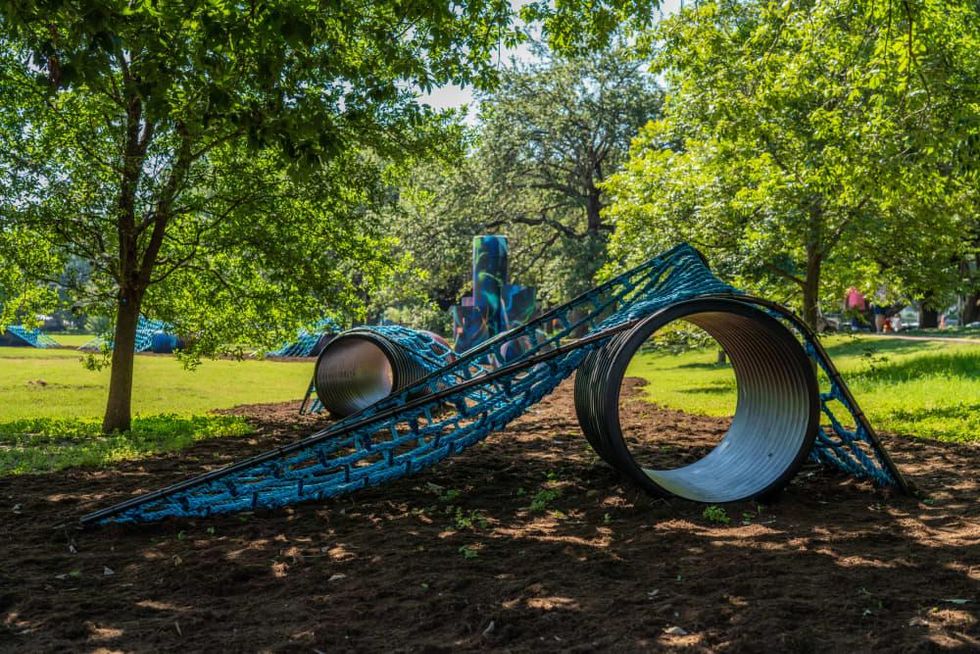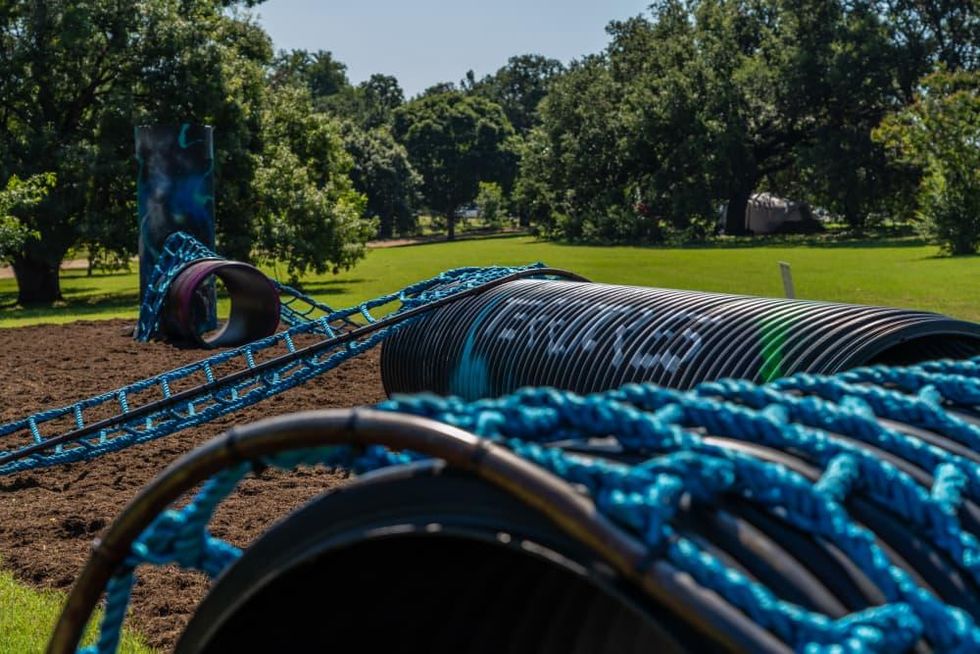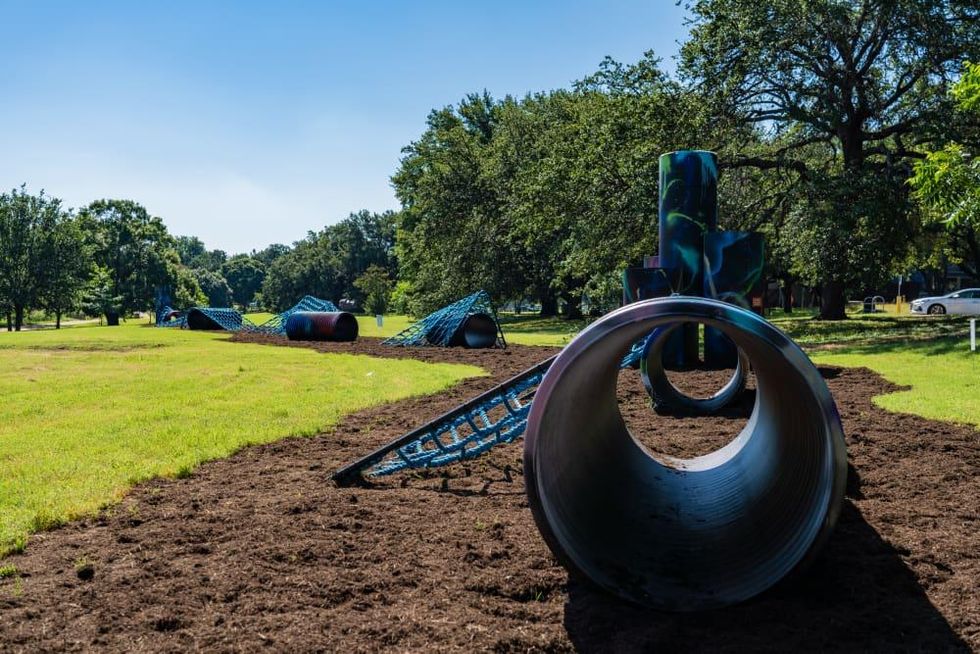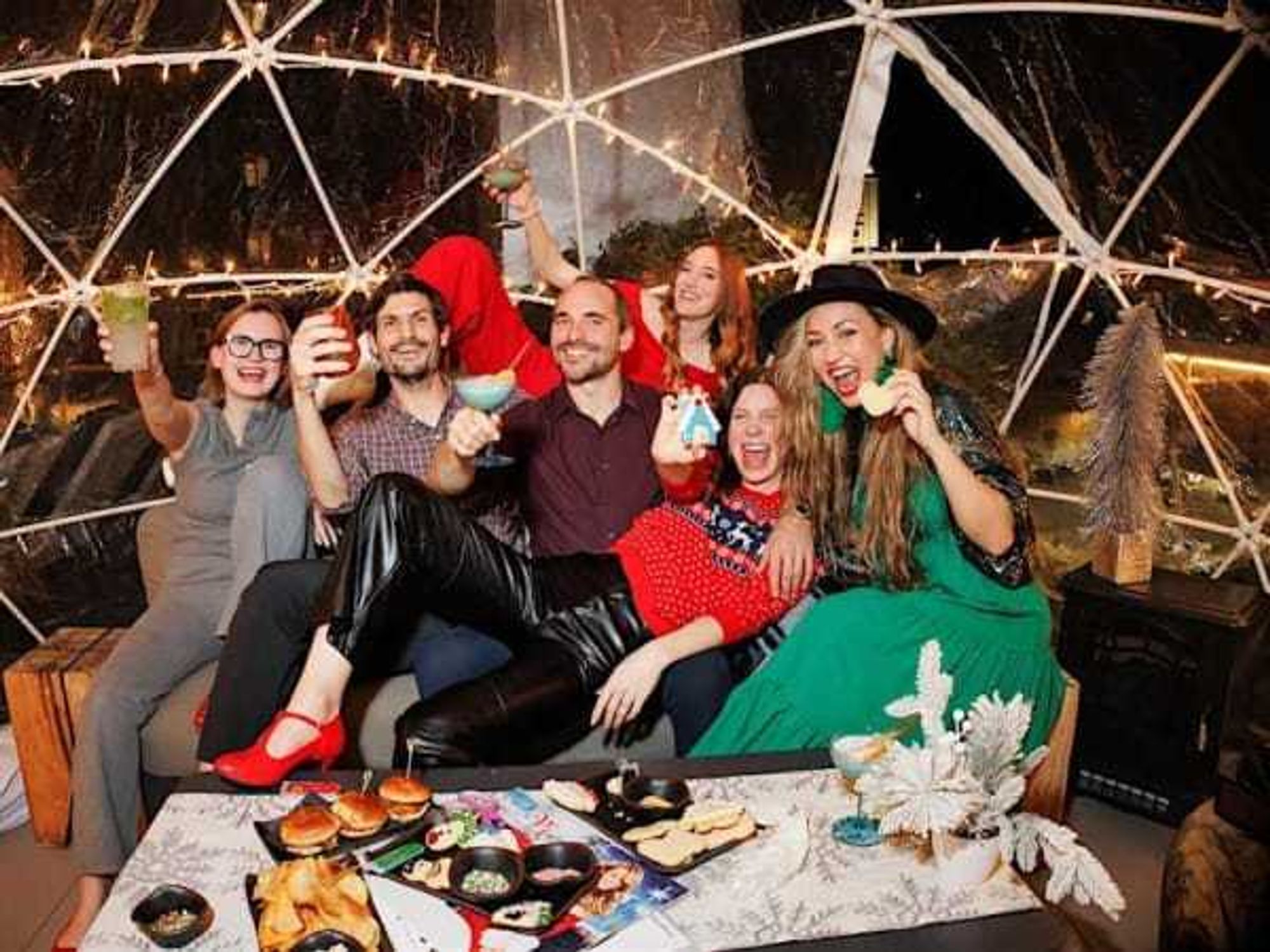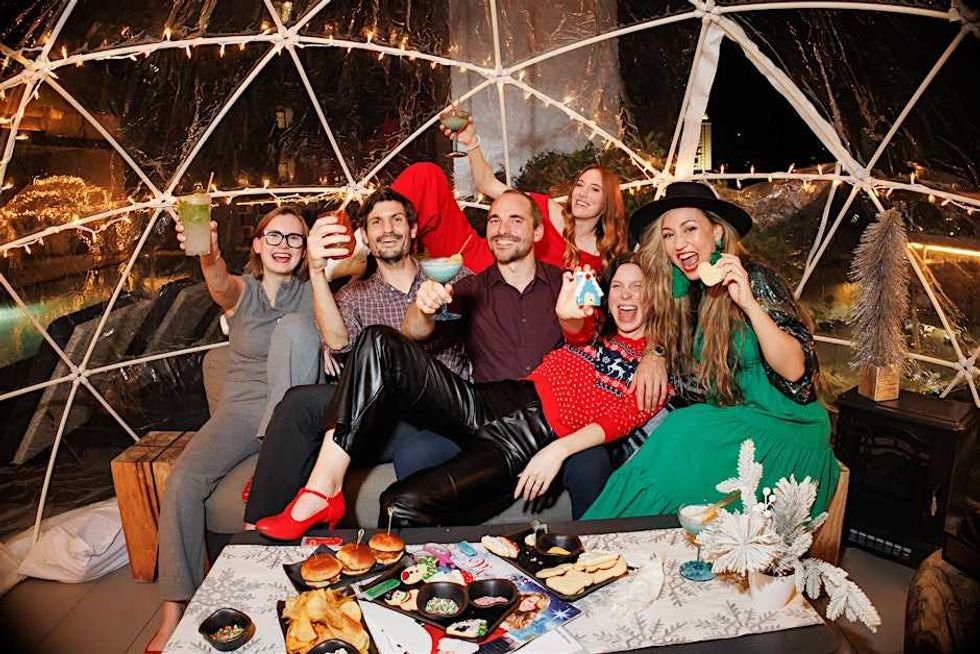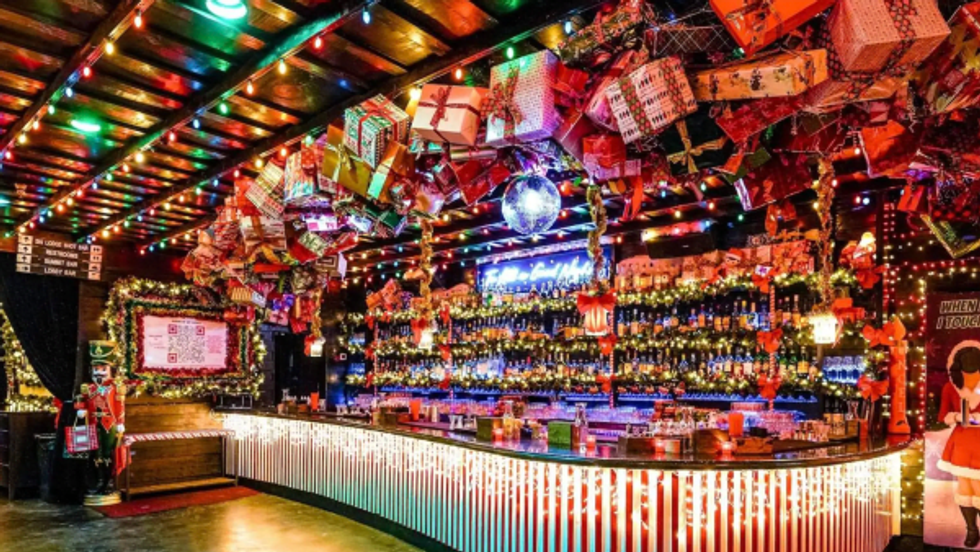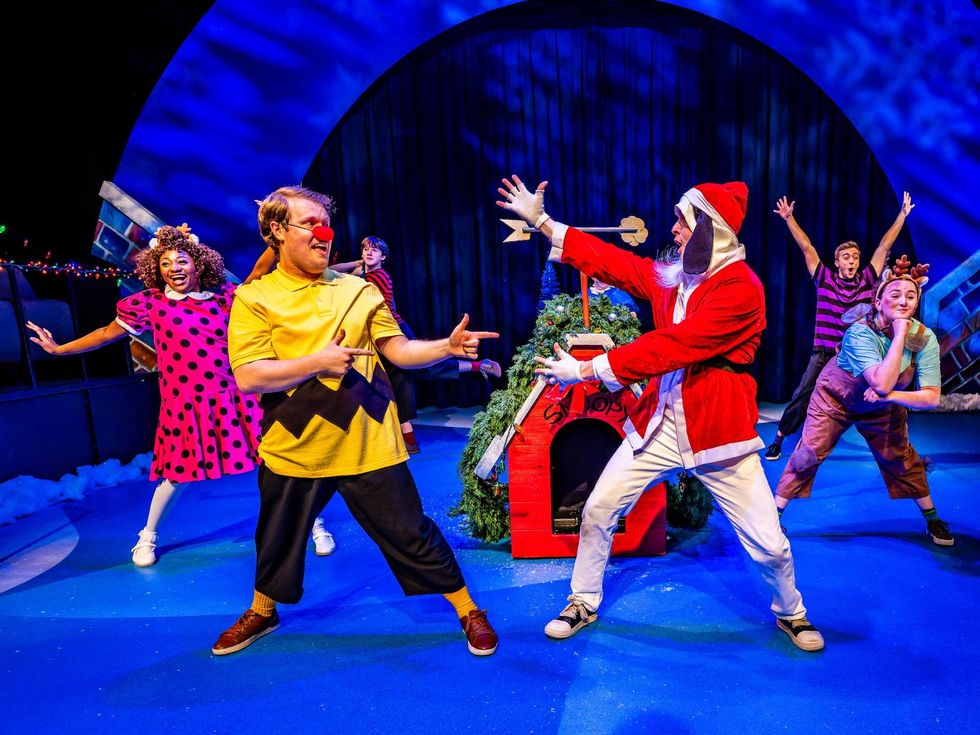How to Play
Playful new interactive installation climbs into Austin's hike-and-bike trail
You were 10 years old, on the slide. You said to your playmates, this is my kingdom. You established a territory. Maybe it was a stump or an abstract patch of grass. It could have been anything. It just mattered that you discovered it. When adults claim territories, it costs money and serves a purpose. It doesn’t always have to be this way.
On Friday, June 25, the Trail Foundation is formally unveiling territories., the first-ever interactive installation on the Ann and Roy Butler Hike and Bike Trail on Lady Bird Lake. The series of 15 discoverable tubes sit in a field just before the east termination of the boardwalk, pretending to have been placed haphazardly. The tubes — corrugated drainage pipes — are draped with bent steel bars and sturdy netting, for added climbing potential, and decorated with cosmic graffiti by the artist Sloke One (Nathan Nordstrom).
While installing territories. in such a publicly visible space, the team from Mark Odom Studio fielded questions, mostly from adults. So many people asked if it was an obstacle course that the team stopped explaining that it wasn’t. (Who’s to say, really? Anything is an obstacle course if you want it enough.)
The studio’s founding principal, Mark Odom, watched one passerby train his dog to cross through one tube, eventually completing an entire circuit from unit to unit. Someone else tried to verbally parse out how frisbee golf could tie in.
“The kids have their own sense of enjoyment but usually they just go at it, and the adults kind of like to have it prescribed for them,” says Odom of the different ways people have stumbled upon the installation so far. “Whatever you want to do, just try it out because it's so hardy. No one's gonna destroy it.”
Odom’s only concern was remembering how to put the installation back together, after moving it from its original location at the Lady Bird Johnson Wildflower Center. The piece was originally created for Fortlandia, an annual exhibit of diverse structures built by local architects and explored by the public. Originally, the concept was an oversized rendering of the "Pick-up Sticks" game. The sticks create little pockets of space in which someone — a group of architects with active imaginations, perhaps — could imagine a tiny person seeking shelter.
The team wanted to create “peekaboo moments” in a meticulously calculated, but apparently random structural heap. The Fortlandia installation was not supposed to be, as Odom pointed out earlier, a prescribed overarching experience. It’s about small moments of engagement that can come together seamlessly. Faced with fabrication concerns, the team noted the pipes they’d seen lying around in other jobs and decided to use them in place of the steel sticks. This kind of brainstorming helps the team expand from their usual processes.
“It allows us to test some of our design methodologies in places in a different realm,” says Odom.
The lighthearted design challenge also gave everyone at the studio a chance to take ownership of the work in a more immediate way than usual, rather than over the course of years. Odom mentions Geoffrey Ford, one of the designers at the studio, as a driving force in completing the project. Ford had a hand in everything from the idea to installation, and coordinated teams along the way. Odom also recognizes Trail Foundation CEO Heidi Anderson, who was “instrumental” in making it happen.
While the installation was up at the Wildflower Center, it was only meant to exist as a design challenge, after which the team was considering donating it to a park or school. Some members of the Trail Foundation stopped by the exhibit and were especially drawn to territories. The foundation started brainstorming locations to extend the project to the public, and settled on the open area next to the boardwalk. Rather than a matter of filling the existing space, the idea was an organic start to an unfolding project.
“They're wanting to do more of this,” explains Mark Odom of the future of the installation and surrounding area. “I think we are really fortunate to be chosen as number one because I’m sure they'll only get better.”
For now, territories. is still temporary, but there is no determined end to the project. The foundation estimates it will be at its Riverside location for the next nine months. Until then, there is plenty of opportunity to jump over, climb, traverse, and aim frisbees through the industrial tubes, especially for adults who need a push to rediscover play.
